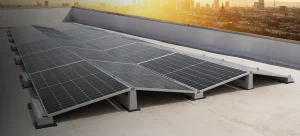
Plumbing pipes are an integral part of any well-functioning property – whether it be supplying water supply lines, transporting sewerage or draining water. Choosing the right kind of plumbing pipe can determine how well it performs and how long it will last.
The ideal plumbing pipes are sturdy and multi-functional, constructed to resist scaling and corrosion. These are the more popular kinds.
Copper
Another option is copper plumbing pipes, which are as long-lasting a piping solution as you can get, won’t rust and are safe for use with potable water. While long-lasting and resale worthy option, copper is more expensive than other piping options on the market such as PVC or PEX, they are more expensive and can not be installed by the homeowner.
Stiff copper is quite thin, but made hard enough to be bendable without crushing, allowing it to be installed in a bent configuration without breaking or cracking. It can be cut with a tubing cutter or hacksaw, but for a best connection it solder connections are preferred (which can be a bit dangerous without careful instruction and procedure).
The variety of copper pipe is in its sizes and types, such as Type L, with the thickest copper pipe wall recommended for residential distribution system with high water pressure, used as hot cold supply lines. Thicker copper pipes, identified with blue stamps, such as Type K or M might not be as popular as type L, but still useful for several other uses on fire protection and fuel oil distribution or HVAC system piping.
Polyvinyl Chloride (PVC)
Your home’s plumbing lines are probably not something you think too much about, until one of them leaks. However, if they’re made of high quality pipe and the right material for what they are carrying, that is less likely to happen down the road.
PVC plumbing pipes are suitable for most of home water lines, the reason is that they can bear up 150PSI water pressure and are resistant to chemical reaction, corrosion and UV exposure compared with copper pipe. When those considerations are added, the price of PVC pipe, roughly 50 cents per foot, becomes quite attractive too.
cross-linked polyethylene (PEX) pipe might have the durability that PVC is missing it has dramatically increased in markets since the 1990s as a result of its greater flexibility that allows it to accommodate more curvy water supply lines and withstand higher pressure under strains.
PP (polypropylene, a rigid plastic ideal for drinking water storage systems and not known to given off toxic fumes when exposed to heat) can be used for DWV systems, but is not allowed in all building codes due to potential damage from impact or force; it should therefore preferably be used indoors unless UV inhibitors and stabilisers are built into your outdoor system.
ABS
Further, ABS plumbing pipes are rated as NSF for Drain-Waste-Vent (DWV) piping which means they can also be used in underground drainage lines not only fixture drains, such as those under toilets or showers to carry awayol A derived composition (BPA), however, DWV piping should not be used to carry potable drinking water.
ABS pipes can be identified due to their characteristic black shade, but PVC ones are generally white or lighter in colour. ABS or PVC? You will have to refer to your local regulations and your project specifictions to determine your choice.
Take into account also the budget; ABS could be cheaper than PVC, you wouldn’t need to buy special primer for PVC, and you would install them faster as you would cement them straight away, but it takes longer. PVC contain less BPA.















